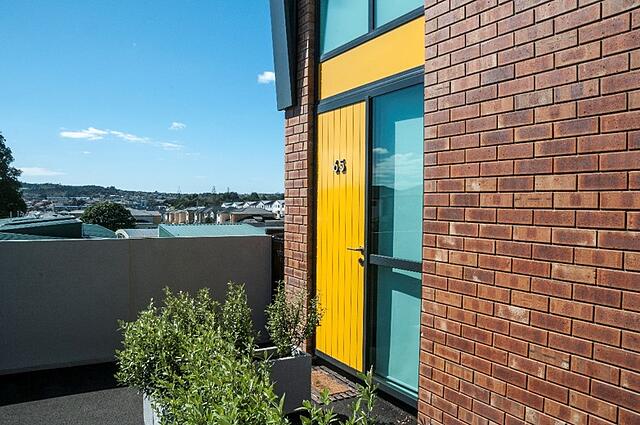THE ENTRANCE AND THE ELEMENTS
Entry doors are often exposed to all four seasons of weather – sometimes in one day!
Constantly changing temperatures (which differ on one side of the door to the other), salt spray and rising and falling humidity demand only the best quality materials and construction that resists warping, remains true and keeps its good looks year after year.
The Elements
On the outside, an entry door endures all forms of weather. At the same time, it must resist the pressure created by the atmosphere on the inside. This may include dry air conditioning, or a hot fire. This creates different atmospheric pressures which all influence the performance of a door.
Choosing the right entry door, especially the right material, for the elements it will endure, is key its success and longevity.

Different exterior elements can affect different materials.
Unlike cladding, a front door isn’t fixed on all edges or sides. With no support except the hinges down one side, sometimes it can be challenging it ensure the door continues to fit in the frame correctly. Whilst its finish and skin can have the same durability as cladding, the structure itself must be a lot stronger.
The sun’s UV rays can cause surface timber to become brittle, crack and break down.
Heat on one side of a door and cold on the other results in pressure on the door which can cause it to bow.
Excessive rain can also wear timber out if it has not been protected adequately whilst moisture in dark damp areas can encourage rotting and mould to grow.
However! There are different materials available that to produce doors that are weather resistance to any condition you come across, and you can read more about them here. Front doors made in composite fibreglass or aluminium are close to being weather-proof. These materials are aren’t affected by the constant hammering or sun rays and UV, rain, salt spray and wind.
View the largest range of composite fibreglass front doors
The way a front door is constructed also influences how the doors stand up to the weather. Understanding door construction is another way you can ensure your choice is the best for the situation you have, and you can learn more here. Some doors have the traditional timber structures, clad in fibreglass and timber. This timber can be made of ‘LVL’ or ‘laminated veneer lumber’ which is very thin layers of timber glued together so its resistance to bowing is much greater. Other doors are reinforced with steel, so they stay straight no matter the atmospheric force against them. However, steel inside the door doesn’t mean the face of the door will remain true against the weather and wear and tear.
The Entrance
Entranceways are the feature on the front face of the home. It is what your visitors see when they arrive. First impressions count, and the entrance can give them this first impression. The entrance can be changed in many ways that can change its mood, style, colour, and actual function.
As building costs rise, entrances may be designed smaller to save cost, with the front porch shelter sometimes being eliminated. Care needs to be taken on what door is selected to ensure it can stand up to the weather it will encounter with the smaller porch roof. It is important that you do your research regarding what material to use for your front door dependent on weather exposure and location.

